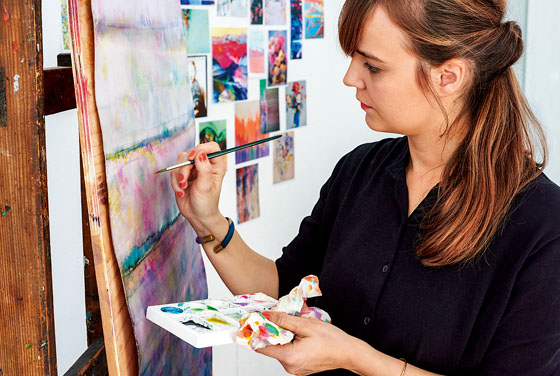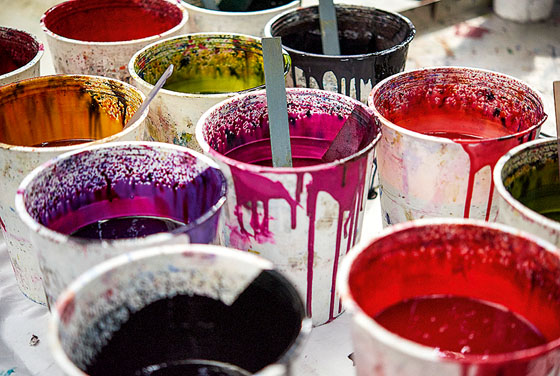It's All in the Fine Print
Text by Atrium Magazin für Wohnkultur, Design und Architektur
Schlieren, Switzerland
07.06.17
The people who work for SCHLOSSBERG are quite aware that they spend a third of their lives in bed. That’s why they know it’s worth giving their all.
Exclusive fabrics: decades of experience have taught Schlossberg the right balance between delicacy and durability
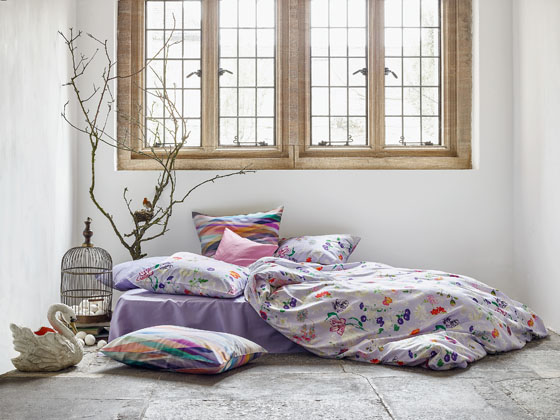
Exclusive fabrics: decades of experience have taught Schlossberg the right balance between delicacy and durability
×As light and airy as Schlossberg bedding might look, a lot of hard work goes into making the fine, elaborately printed satin fabrics. Even planning the collection is quite a feat. The team headed by CEO Thomas Boller often sits late into the night, weighing up options and debating passionately. Once the planning has been settled, it’s time for the textile designers to do their bit and set to work on the meticulously painted patterns that are the firm’s hallmark. A lot of effort goes into the printing process as well. It takes up to 15 stencils per design to transfer the brilliance of the colours to the fabric. The designers monitor the process at the traditional Como printing works closely. Fine-tuning the individual shades is a painstaking process that calls for a great deal of experience; it can take weeks to achieve the right balance. Most of the fabrics come from weaving mills in northern Italy. Home textiles need a weaving width of three metres, which is why only a small number of the fabrics come from domestic producers.
Colourisation: a screen is made for every colour. It can take up to 15 screens to print a single design. Lovingly created: the patterns are hand-painted by the company’s textile designers before being digitised
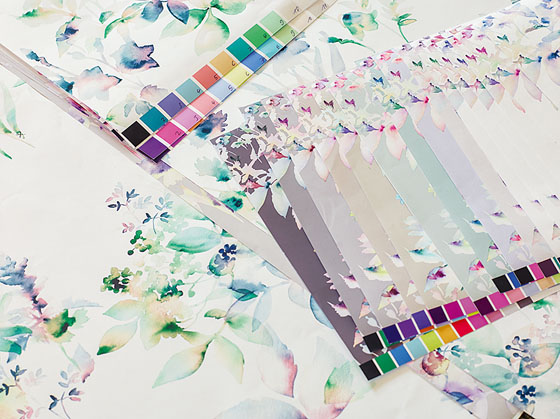
Colourisation: a screen is made for every colour. It can take up to 15 screens to print a single design. Lovingly created: the patterns are hand-painted by the company’s textile designers before being digitised
×Besides two weaving mills, Schlossberg’s Swiss partners also include a dye works and a knitting factory. Since the country’s last cotton mill closed down, Schlossberg has been sourcing its cotton yarn from Germany. “The Swiss textile industry has changed enormously over the last few decades. As recently as the 1980s, the sector still had a workforce of more than 37,000 people; today, it’s barely a quarter of that. Some things simply can’t be produced in Switzerland any more, especially when it comes to yarn. For the most part, we use Californian extra-long staple cotton. This type of fibre accounts for less than one percent of the global cotton crop and is therefore easily traceable. And the cotton we use for our terrycloth products is certified with the GOTS label, which takes both social and ecological aspects into account,” explains Boller. Schlossberg realised the importance of sustainability at an early stage, for instance when it developed the Coloured Cotton Collection 20 years ago and created its subtle natural shades not with colour additives but by using cotton grown from old, heirloom seed.
An elaborate process: the fabrics are printed at the best traditional workshops in the Como region. One of the designers monitors the printing process on site, keeping a careful eye on quality and colour nuances
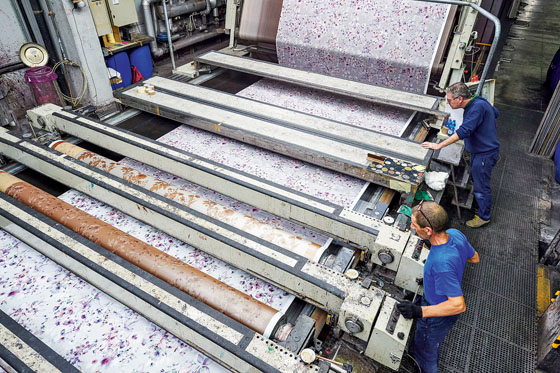
An elaborate process: the fabrics are printed at the best traditional workshops in the Como region. One of the designers monitors the printing process on site, keeping a careful eye on quality and colour nuances
×A luxury good shouldn’t define itself by price alone. At Schlossberg, it’s the aspiration to innovate that makes the difference – and that applies not just to products but to materials and manufacturing as well. A recent example: the company spent more than two years perfecting a set of bed linen with LEDs embroidered into the fabric until it was ready for launch. Obviously the result is anything but a mass-market product. But who wouldn’t like to sleep between the stars?
Celeste: stitched in place and integrated into the delicate St. Gallen embroidery, the LED sequins are barely visible
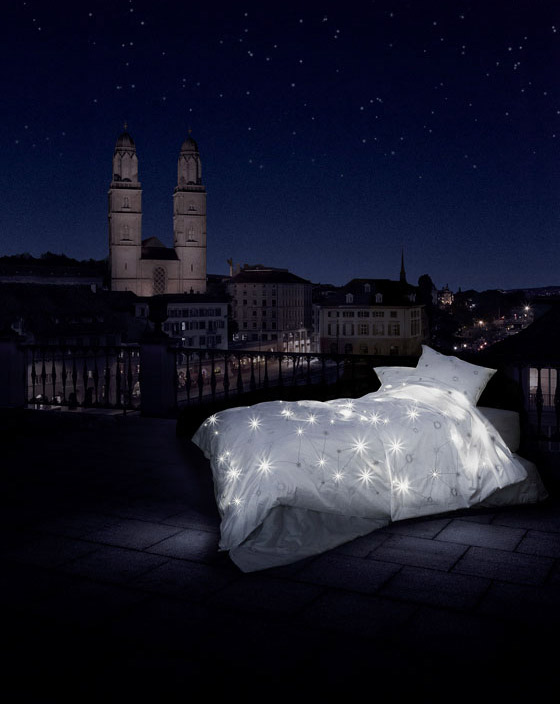
Celeste: stitched in place and integrated into the delicate St. Gallen embroidery, the LED sequins are barely visible
×SCHLOSSBERG: The roots of the family-run company go all the way back to 1833. The alliance between the Winkler spinning mill from Turbenthal and the Boller fabric manufacturing enterprise as the result of a marriage laid the foundations for today’s Boller Winkler AG. During the 1950s, the firm ceased its fabric production activities and switched to home textiles. The brand name Schlossberg was introduced in 1959 and alludes to a real mountain in the local region. The name stands for luxury bed linen of the finest quality.
Schlossberg Textil AG
Tösstalstrasse 15
8488 Turbenthal
Tel. 0041 (0)52 396 23 23
info@schlossberg.ch
Text: Mirjam Rombach
Photos: Stefan Schlumpf


